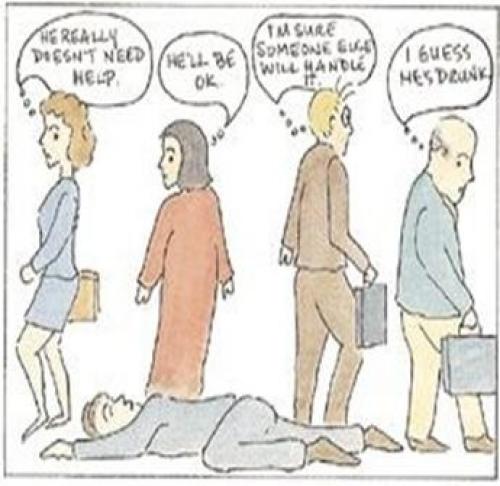Some Psychological Facts That People Don't Know
 1. Inception (only sort of) or Incorporation of Reality in Dreams
1. Inception (only sort of) or Incorporation of Reality in Dreams
You can alter someone's dreams as they are dreaming.
What the brain does, ever so often, is include stimuli happening in reality in whatever one is dreaming. Say you throw water on someone who is sleeping and she wakes up all of a sudden and narrates what she saw in her dreams.
More often than not this gushing of water is incorporated elegantly in the dream. This served as inspiration for a sequence in Inception where
a sleeping Cobb is shoved into a full bath, and in the dream world water gushes into the windows of the building, waking him up
This happened in reality.

And caused this in his dream.

Freud had also mentioned this. Alfred Maury in Le sommeil et les rêves narrates how a bar falling on his neck while sleeping became a guillotine in his dream and he woke up suddenly. This was related by Freud in The Interpretation of Dreams.
Also sounds happening around us make their way into our dreams. Optimistically, you can think of introducing characters in dreams by saying some names while someone is sleeping. This is exactly what Berger set out to do.
Berger (1963) assessed the effects of meaningful verbal stimuli on dreaming. These stimuli were the names of the subjects' friends (provided by the subjects) that when presented while the subjects were awake had elicited the largest galvanic skin responses (GSRs). Dream incorporation was judged to have taken place on about half of the occasions. Of the 48 dreams that were judged to have been affected by the stimuli there had been 31 incorporations on the basis of assonance alone - for instance, 'Gillian' had been voiced as 'Chilean', 'Jenny' as 'Jemmy', and 'Mike' as 'like'. Only on three occasions had the named individual actually appeared in the dream as themselves.
Anyone up for a little game of Inception?
2. Bystander effect
You might want to believe that if you are in an accident or emergency, you would have a greater chance of being rescued if you are in a crowded place. But countless experiments and incidents have proven exactly the opposite.The greater the number of observers, the less likely it is that one of them will help you. This is due to a phenomenon called Diffusion of responsibility whereby a person is less likely to take responsibility for action or inaction when others are present.

If you have ever worked in a group project in school.or college you probably have experienced this first-hand. There is almost always that one guy or girl who refuses to contribute to the project till the very end.
A darker example of this phenomenon is the group dynamics in a gang rape.
These factors are diffusion of responsibility, deindividuation, and modeling, all of which can be applied to the dynamics of gang rape. Thus, no one individual in a gang rape believes that he is solely to blame for the victimization taking place.
This effect goes even deeper
3. Cocktail party effect
Even in a noisy, crowded place if someone says your name, you can tune out other noises and focus on that voice. This effect is also true for other information that might be important to us. This effect changed the way psychologists thought about auditory input and attention.
Do we listen to everything first and then filtering takes place? Or filtering of supposedly useless input takes place even before we hear things?
This effect led to the concept of attention models which is important in psychology